Gomitas: Revisión de sus Ingredientes, Proceso de Elaboración, Estabilidad, Vida Útil y Tendencias del Mercado
Resumen
Las gomitas son un producto popular en la industria de la confitería, caracterizadas por su variedad de sabores y formas atractivas. El principal desafío en su producción es equilibrar los ingredientes y optimizar los procesos para asegurar una excelente textura, sabor, aroma y calidad, mientras se adaptan a la demanda de productos más saludables y sostenibles. Esta contribución analizó la composición, procesos de elaboración, propiedades fisicoquímicas, vida útil y tendencias de las gomitas de grenetina. Los ingredientes principales son agua, sacarosa refinada, jarabe de maíz y grenetina, junto con aditivos alimentarios. Estudios recientes han explorado la inclusión de ingredientes como galato de epigalocatequina, miel, ácido cítrico, y extractos de frutas y vegetales para aumentar el contenido de proteínas y fibra, y reducir carbohidratos y azúcares. Su elaboración varía desde métodos artesanales hasta procesos industrializados, utilizando tecnologías de cocción semicontinua y continua. La calidad sensorial y la vida útil de las gomitas dependen de la interacción de los hidrocoloides y del control de la humedad y de la temperatura. En conclusión, el desarrollo de gomitas innovadoras con mejor valor nutricional y calidad sensorial es posible mediante la optimización de ingredientes y procesos de producción, aunque se requiere mayor investigación.
Descargas
Citas
https://doi.org/10.1016/J.MATPR.2020.12.922
Anyasi, T. A., Nosa E. J., & Anokwuru, C. (2017). Application of organic acids in food preservation. In C. Vargas (Ed.), Organic acids characteristics, properties, and synthesis (pp. 1–45). Nova Science Publishers Inc.
Appleton, P., Adams, J., & Abene, T. (2018). Gummy composition with improved stability (Patent US20180250225A1).
Aranda-González, I., Tamayo-Dzul, Ó., Barbosa-Martín, E., Segura-Campos, M., Moguel-Ordoñez, Y., & Betancur-Ancona, D. (2015). Desarrollo de una golosina tipo “gomita” reducida en calorías mediante la sustitución de azúcares con Stevia rebaudiana B. Nutrición Hospitalaria, 31(1), 334–340. https://doi.org/10.3305/nh.2015.31.1.8013
Banerjee, S., & Bhattacharya, S. (2012). Food Gels: Gelling Process and New Applications. Critical Reviews in Food Science and Nutrition, 52(4), 334–346.
https://doi.org/10.1080/10408398.2010.500234
Bharat, L. P., Manojkumar, S. P., & Suleman, K. S. (2020). Development of fiber rich gummies. International Journal of Advance Research, Ideas and Innovations in Technology, 6(4), 52–55.
Bigi, A., Panzavolta, S., & Rubini, K. (2004). Relationship between triple-helix content and mechanical properties of gelatin films. Biomaterials, 25(25), 5675–5680.
https://doi.org/10.1016/J.BIOMATERIALS.2004.01.033
Burey, P., Bhandari, B. R., Rutgers, R. P. G., Halley, P. J., & Torley, P. J. (2009). Confectionery gels: A review on formulation, rheological and structural aspects. International Journal of Food Properties, 12(1), 176–210. https://doi.org/10.1080/10942910802223404
Čižauskaite, U., Jakubaityte, G., Žitkevičius, V., & Kasparavičiene, G. (2019). Natural ingredients-based gummy bear composition designed according to texture analysis and sensory evaluation in vivo. Molecules, 24(7). https://doi.org/10.3390/molecules24071442
Crawford, E. B., Coco, T., Gaines, L. D., Shah, N., & Slattery, A. (2020). Pediatric ingestions with gummy formulated medications: a retrospective study. Clinical Toxicology, 59(5), 440–444. https://doi.org/10.1080/15563650.2020.1822532
Davidson, M. P., David, J. R., & Taylor, M. (2005). Antimicrobials in Food (3rd ed.). Taylor & Francis.
Delgado, P., & Bañón, S. (2015). Determining the minimum drying time of gummy confections based on their mechanical properties. CYTA - Journal of Food, 13(3), 329–335. https://doi.org/10.1080/19476337.2014.974676
DeMars, L. L., & Ziegler, G. R. (2001). Texture and structure of gelatin/pectin-based gummy confections. Food Hydrocolloids, 15(4–6), 643–653. https://doi.org/10.1016/S0268-005X(01)00044-3
Dey, K., & Sheth, M. (2023). Development of Galactooligosaccharide (GOS) added gummies: sensory, characterization and shelf quality. Food Production, Processing and Nutrition, 5(1). https://doi.org/10.1186/s43014-022-00117-w
Dokic, L., Jakovljevic, J., & Dokic, P. (2004). Relation between viscous characteristics and dextrose equivalent of maltodextrins. Starch/Staerke, 56(11), 520–525.
https://doi.org/10.1002/star.200400294
Edwards, W. P. (2018). The Science of Sugar Confectionery (2nd ed.). Royal Society of Chemistry: Braintree, UK.
Ergun, R., Lietha, R., & Hartel, R. W. (2010). Moisture and shelf life in sugar confections. Critical Reviews in Food Science and Nutrition, 50(2), 162–192.
https://doi.org/10.1080/10408390802248833
Gan, D., Xu, M., Chen, L., Cui, S., Deng, C., Qiao, Q., Guan, R., & Zhong, F. (2022). Intake of Sugar Substitute Gummy Candies Benefits the Glycemic Response in Healthy Adults: A Prospective Crossover Clinical Trial. Gels, 8(10). https://doi.org/10.3390/gels8100642
Ge, H., Wu, Y., Woshnak, L. L., & Mitmesser, S. H. (2021). Effects of hydrocolloids, acids and nutrients on gelatin network in gummies. Food Hydrocolloids, 113, 106549.
https://doi.org/10.1016/J.FOODHYD.2020.106549
Gok, S., Toker, O. S., Palabiyik, I., & Konar, N. (2020). Usage possibility of mannitol and soluble wheat fiber in low calorie gummy candies. LWT, 128, 109531.
https://doi.org/10.1016/J.LWT.2020.109531
González-Otamendi, M. de J., Pérez-Flores, J. G., Contreras-López, E., Soto-Vega, K., García-Curiel, L., Pérez-Escalante, E., Islas-Martínez, D., Jijón, C. Á., & Portillo-Torres, L. A. (2024). Uso de Polioles en la Industria de la Confitería. Ciencia Latina Revista Científica Multidisciplinar, 8(3), 499–528. https://doi.org/10.37811/cl_rcm.v8i3.11259
Grand View Research. (2024, July 4). Market analysis report. Gummy Market Size, Share & Trends Analysis Report By Product (Vitamins, Minerals, Dietary Fibers), By Ingredient (Gelatin, Plant-Based Gelatin Substitutes), By End-Use (Adults, Kids), By Distribution Channel, By Region, And Segment Forecasts, 2024 - 2030.
Grazela, A., & Morrison, N. A. (2003). Gelatin-free gummy confection using gellan gumand carrageenan (Patent US 6,586,032 B2).
Gunes, R., Palabiyik, I., Konar, N., & Said Toker, O. (2022). Soft confectionery products: Quality parameters, interactions with processing and ingredients. Food Chemistry, 385, 132735. https://doi.org/10.1016/J.FOODCHEM.2022.132735
Hartel, R. W. (2018). Confectionery Science and Technology. Springer Science Business Media.
Hartel, R. W., Von Elbe, J. H., & Hofberger, R. (2018). Jellies, gummies, and licorices. In Confectionery Science and Technology (pp. 329–359).
Haug, I. J., & Draget, K. I. (2009). Gelatin. In G. O. Phillips & P. A. Williams (Eds.), Handbook of hydrocolloids (2nd ed., pp. 67–86).
Herrada-Manchón, H., Rodríguez-González, D., Alejandro Fernández, M., Suñé-Pou, M., Pérez-Lozano, P., García-Montoya, E., & Aguilar, E. (2020). 3D printed gummies: Personalized drug dosage in a safe and appealing way. International Journal of Pharmaceutics, 587, 119687. https://doi.org/10.1016/J.IJPHARM.2020.119687
Hinkova, A., Bubnik, Z., & Kadlec, P. (2015). Chemical Composition of Sugar and Confectionery Products. In Handbook of Food Chemistry (pp. 585–626). Springer Berlin Heidelberg. https://doi.org/10.1007/978-3-642-36605-5_30
Holm, K., Wendin, K., & Hermansson, A. M. (2009). Sweetness and texture perceptions in structured gelatin gels with embedded sugar rich domains. Food Hydrocolloids, 23(8), 2388–2393. https://doi.org/10.1016/J.FOODHYD.2009.06.016
Hull, P. (2011). Glucose Syrups Technology and Applications. Alemania: Wiley.
Jiamjariyatam, R. (2018). Influence of gelatin and isomaltulose on gummy jelly properties. International Food Research Journal, 25(2), 776–783.
Karim, A. A., & Bhat, R. (2008). Gelatin alternatives for the food industry: recent developments, challenges and prospects. Trends in Food Science & Technology, 19(12), 644–656. https://doi.org/10.1016/J.TIFS.2008.08.001
Lau, M. H., Tang, J., & Paulson, A. T. (2000). Texture profile and turbidity of gellan/gelatin mixed gels. Food Research International, 33(8), 665–671. https://doi.org/10.1016/S0963-9969(00)00111-3
Lees, R. (1980). Faults, Causes and Remedies In Sweet and Chocolate Manufacture. Specialised Publications Limited.
Lonez, H. E. (2021). Butterfly Pea (Clitoria ternatea): A natural colorant for soft candy (Gummy Candy). Indian Journal of Science and Technology, 14(3), 239–244. https://doi.org/10.17485/IJST/v14i3.582
Lubbers, S., & Guichard, E. (2003). The effects of sugars and pectin on flavour release from a fruit pastille model system. Food Chemistry, 81(2), 269–273. https://doi.org/10.1016/S0308-8146(02)00422-3
Ly, K. A., Riedy, C. A., Milgrom, P., Rothen, M., Roberts, M. C., & Zhou, L. (2008). Xylitol gummy bear snacks: A school-based randomized clinical trial. BMC Oral Health, 8(1). https://doi.org/10.1186/1472-6831-8-20
Mandura, A., Šeremet, D., Ščetar, M., Vojvodić Cebin, A., Belščak-Cvitanović, A., & Komes, D. (2020). Physico-chemical, bioactive, and sensory assessment of white tea-based candies during 4-months storage. Journal of Food Processing and Preservation, 44(8). https://doi.org/10.1111/jfpp.14628
Marfil, P. H. M., Anhê, A. C. B. M., & Telis, V. R. N. (2012). Texture and Microstructure of Gelatin/Corn Starch-Based Gummy Confections. Food Biophysics, 7(3), 236–243.
https://doi.org/10.1007/s11483-012-9262-3
Martínez-Álvarez, L.E., Rodríguez-Castillejo, C. G., Isidro-Requejo, L. M., & Tellez-Luis, S. (2016). Determinación de la vida de anaquel de las gomitas elaboradas con miel multiflora y uniflora enriquecidas con vitaminas. Investigación y Desarrollo En Ciencia y Tecnología de Alimentos, 1(2), 139–141.
Mason, L. (2018). Sweets and Candy: A Global History. Reaktion Books Ltd: London.
Matulyte, I., Mataraite, A., Velziene, S., & Bernatoniene, J. (2021). The effect of myristica fragrans on texture properties and shelf-life of innovative chewable gel tablets. Pharmaceutics, 13(2), 1–15. https://doi.org/10.3390/pharmaceutics13020238
Miller, M. D., Steinmaus, C., Golub, M. S., Castorina, R., Thilakartne, R., Bradman, A., & Marty, M. A. (2022). Potential impacts of synthetic food dyes on activity and attention in children: a review of the human and animal evidence. Environmental Health: A Global Access Science Source, 21(1). https://doi.org/10.1186/s12940-022-00849-9
Moghaddas, K. E., Ghaderzadeh, S., Mojaddar, L. A., Ghasempour, Z., & Ehsani, A. (2020). Red beet extract usage in gelatin/gellan based gummy candy formulation introducing Salix aegyptiaca distillate as a flavouring agent. Journal of Food Science and Technology, 57(9), 3355–3362. https://doi.org/10.1007/s13197-020-04368-8
Morrison, N. A., Sworn, G., Clark, R. C., Chen, Y. L., & Talashek, T. (1999). Gelatin alternatives for the food industry. Progress in Colloid and Polymer Science, 114, 127–131. https://doi.org/10.1007/3-540-48349-7_19
Mufida, R. T., Darmanto, Y. S., & Suharto, S. (2020). Characteristics of gummy candy with the addition of different fish scale gelatin. Journal of Food Science and Technology, 2(1), 1–45.
Niam, M. L. Q., Amin, R. S., Utami, N., & Wahyuni, A. S. (2022). Formulation of Dietary Supplement Chewable Gummy with Bastard Cedar Leaves (Guazuma Ulmifolia), Senna Leaves (Cassia Angustifolia) and Lime Extracts Using a Simplex Lattice Design. Advances in Health Sciences Research, 55, 122–135. https://doi.org/10.2991/978-94-6463-070-1_17
Normand, V., Muller, S., Ravey, J. C., & Parker, A. (2000). Gelation kinetics of gelatin: a master curve and network modeling. Macromolecules, 33(3), 1063–1071. https://doi.org/10.1021/ma9909455
Nurilmala, M., Darmawan, N., Putri, E. A. W., Jacoeb, A. M., & Irawadi, T. T. (2021). Pangasius Fish Skin and Swim Bladder as Gelatin Sources for Hard Capsule Material. International Journal of Biomaterials, 2021. https://doi.org/10.1155/2021/6658002
Otálora, M. C., de Jesús Barbosa, H., Perilla, J. E., Osorio, C., & Nazareno, M. A. (2018). Encapsulated betalains (Opuntia ficus-indica) as natural colorants. Case study: Gummy candies. LWT - Food Science and Technology, 103(2019), 222–227. https://doi.org/10.1016/J.LWT.2018.12.074
Pang, Z., Deeth, H., Sopade, P., Sharma, R., & Bansal, N. (2014). Rheology, texture and microstructure of gelatin gels with and without milk proteins. Food Hydrocolloids, 35, 484–493. https://doi.org/10.1016/J.FOODHYD.2013.07.007
Pegg, A. M. (2012). The application of natural hydrocolloids to foods and beverages. In Natural Food Additives, Ingredients and Flavourings (pp. 175–196). Woodhead Publishing Series in Food Science, Technology and Nutrition. https://doi.org/10.1533/9780857095725.1.175
Periche, A., Heredia, A., Escriche, I., Andrés, A., & Castelló, M. L. (2014). Optical, mechanical and sensory properties of based-isomaltulose gummy confections. Food Bioscience, 7, 37–44. https://doi.org/10.1016/j.fbio.2014.05.006
Picot-Allain, M. C. N., Ramasawmy, B., & Emmambux, M. N. (2022). Extraction, Characterisation, and Application of Pectin from Tropical and Sub-Tropical Fruits: A Review. Food Reviews International, 38(3), 282–312. https://doi.org/10.1080/87559129.2020.1733008
Porayanee, M., Katemake, P., & Duangmal, K. (2015). Effect of gelatin concentrations and glucose syrup to sucrose ratios on textural and optical properties of gelatin gel Journal of Food Science and Agricultural Technology. Journal of Food Science and Agricultural Technology, 1(1), 26–30.
Prajapati, V. D., Jani, G. K., Zala, B. S., & Khutliwala, T. A. (2013). An insight into the emerging exopolysaccharide gellan gum as a novel polymer. Carbohydrate Polymers, 93(2), 670–678. https://doi.org/10.1016/J.CARBPOL.2013.01.030
Promjeen, K., Phasinam, T., & Phasinam, K. (2024). Optimizing confectionery production: A semi-automatic gummy jelly dropping machine design and performance evaluation. Edelweiss Applied Science and Technology, 8(1), 1–12. https://doi.org/10.55214/25768484.v8i1.411
Ramadhanty, A., Rosida, D. F., & Yulistiani, R. (2023). Chemical and Organoleptic Properties of Dragon Fruit Gummy Candy and Apple Snail Collagen Extract with Carrageenan Addition. Asian Journal of Applied Research for Community Development and Empowerment, 7(3), 40–45. https://doi.org/10.29165/ajarcde.v7i3.328
Ramírez, G. M. M., & Orozco, S. N. E. (2014). Confitería. De lo artesanal a la tecnología (2nd ed.). Universidad Autónoma de Aguascalientes.
Romo-Zamarrón, K. F., Pérez-Cabrera, L. E., & Tecante, A. (2019). Physicochemical and Sensory Properties of Gummy Candies Enriched with Pineapple and Papaya Peel Powders. Food and Nutrition Sciences, 10(11), 1300–1312. https://doi.org/10.4236/fns.2019.1011094
Roudbari, M., Barzegar, M., Sahari, M. A., & Gavlighi, H. A. (2024). Formulation of functional gummy candies containing natural antioxidants and stevia. Heliyon, 10(11), e31581. https://doi.org/10.1016/j.heliyon.2024.e31581
Saari, H., Fuentes, C., Sjöö, M., Rayner, M., & Wahlgren, M. (2017). Production of starch nanoparticles by dissolution and non-solvent precipitation for use in food-grade Pickering emulsions. Carbohydrate Polymers, 157, 558–566. https://doi.org/10.1016/J.CARBPOL.2016.10.003
Saha, D., & Bhattacharya, S. (2010). Hydrocolloids as thickening and gelling agents in food: A critical review. In Journal of Food Science and Technology (Vol. 47, Issue 6, pp. 587–597). https://doi.org/10.1007/s13197-010-0162-6
Saleem, N., Umar, Z. N., & Khan, S. I. (2013). Survey on the use of synthetic Food Colors in Food Samples procured from different educational institutes of Karachi city. Journal of Tropical Life Science., 3(1), 1–7. https://doi.org/10.11594/jtls.03.01.01
Saxena, S., & Raja, A. S. M. (2014). Natural Dyes: Sources, Chemistry, Application and Sustainability Issues. In S. Muthu (Ed.), Roadmap to Sustainable Textiles and Clothing. Textile Science and Clothing Technology. (pp. 37–80). Springer, Singapore. https://doi.org/10.1007/978-981-287-065-0_2
Takeungwongtrakul, S., Thavarang, P., & Sai-Ut, S. (2020). Development of Strawberry gummy jelly with reduced sugar content from Strawberry syrup. International Journal of Agricultural Technology, 16(5), 1267–1276.
Tarahi, M., Tahmouzi, S., Kianiani, M. R., Ezzati, S., Hedayati, S., & Niakousari, M. (2024). Current Innovations in the Development of Functional Gummy Candies. In Foods (Vol. 13, Issue 1). Multidisciplinary Digital Publishing Institute (MDPI). https://doi.org/10.3390/foods13010076
Teixeira-Lemos, E., Almeida, A. R., Vouga, B., Morais, C., Correia, I., Pereira, P., & Guiné, R. P. F. (2021). Development and characterization of healthy gummy jellies containing natural fruits. Open Agriculture, 6(1), 466–478. https://doi.org/10.1515/opag-2021-0029
Tireki, S., Sumnu, G., & Sahin, S. (2021). Correlation between physical and sensorial properties of gummy confections with different formulations during storage. Journal of Food Science and Technology, 58(9), 3397–3408. https://doi.org/10.1007/s13197-020-04923-3
Tripathi, M., Khanna, S. K., & Das, M. (2007). Surveillance on use of synthetic colours in eatables vis a vis Prevention of Food Adulteration Act of India. Food Control, 18(3), 211–219. https://doi.org/10.1016/J.FOODCONT.2005.09.016
Tungland, B. C., & Meyer, D. (2002). Nondigestible Oligo- and Polysaccharides (Dietary Fiber): Their Physiology and Role in Human Health and Food. Comprehensive Reviews in Food Science and Food Safety, 1(3), 90–109.
USDA. (2022). FoodData Central. Candy, Gummy. https://fdc.nal.usda.gov/fdc-app.html#/food-details/2345919/nutrients
Van De Velde, F., Lourenco, N. D., Pinheiro, H. M., & Bakker, M. (2003). Carrageenan: A Food-Grade and Biocompatible Support for Immobilisation Techniques. Advanced Synthesis & Catalysis, 344(8), 815–835. https://doi.org/https://doi.org/10.1002/1615-4169(200209)344:8<815::AID-ADSC815>3.0.CO;2-H
Vojvodić, C. A., Bunić, M., Mandura, J. A., Šeremet, D., & Komes, D. (2024). Physicochemical and Sensory Stability Evaluation of Gummy Candies Fortified with Mountain Germander Extract and Prebiotics. Polymers, 16(2). https://doi.org/10.3390/polym16020259
Wang, R., & Hartel, R. W. (2022a). Citric acid and heating on gelatin hydrolysis and gelation in confectionery gels. Food Hydrocolloids, 129, 107642.
https://doi.org/10.1016/J.FOODHYD.2022.107642
Wang, R., & Hartel, R. W. (2022b). Confectionery gels: Gelling behavior and gel properties of gelatin in concentrated sugar solutions. Food Hydrocolloids, 124, 107132. https://doi.org/10.1016/J.FOODHYD.2021.107132
Williams, P. A. (2007). Handbook of industrial water soluble polymers. Blackwell Pub.
Wrolstad, R. E., & Culver, C. A. (2012). Alternatives to those artificial FD & C food colorants. Annual Review of Food Science and Technology, 3(1), 59–77. https://doi.org/10.1146/annurev-food-022811-101118
Zandi, M., & Mayer, C. (2007). Effects of Concentration, Temperature, and pH on Chain Mobility of Gelatin during Early Stages of Gelation. Iranian Polymer Journal, 16(12), 861–870.
Derechos de autor 2024 Briceidi Yazmin San Agustin Fragoso , Laura García Curiel, Jesús Guadalupe Pérez Flores , Elizabeth Contreras López , Emmanuel Pérez Escalante, Lizbeth Anahí Portillo Torres, Luis Guillermo González Olivares , Mirandeli Bautista Ávila , Juan Ramírez Godínez

Esta obra está bajo licencia internacional Creative Commons Reconocimiento 4.0.













.png)
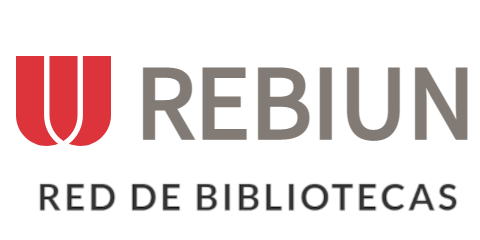







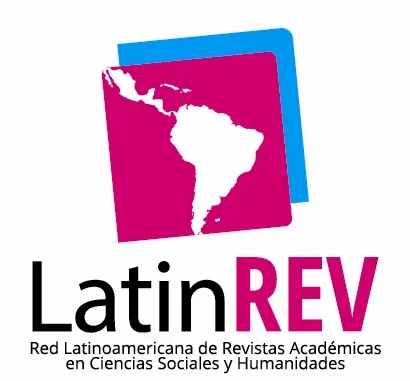

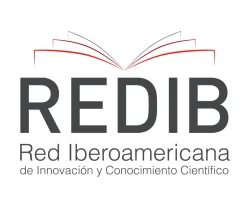


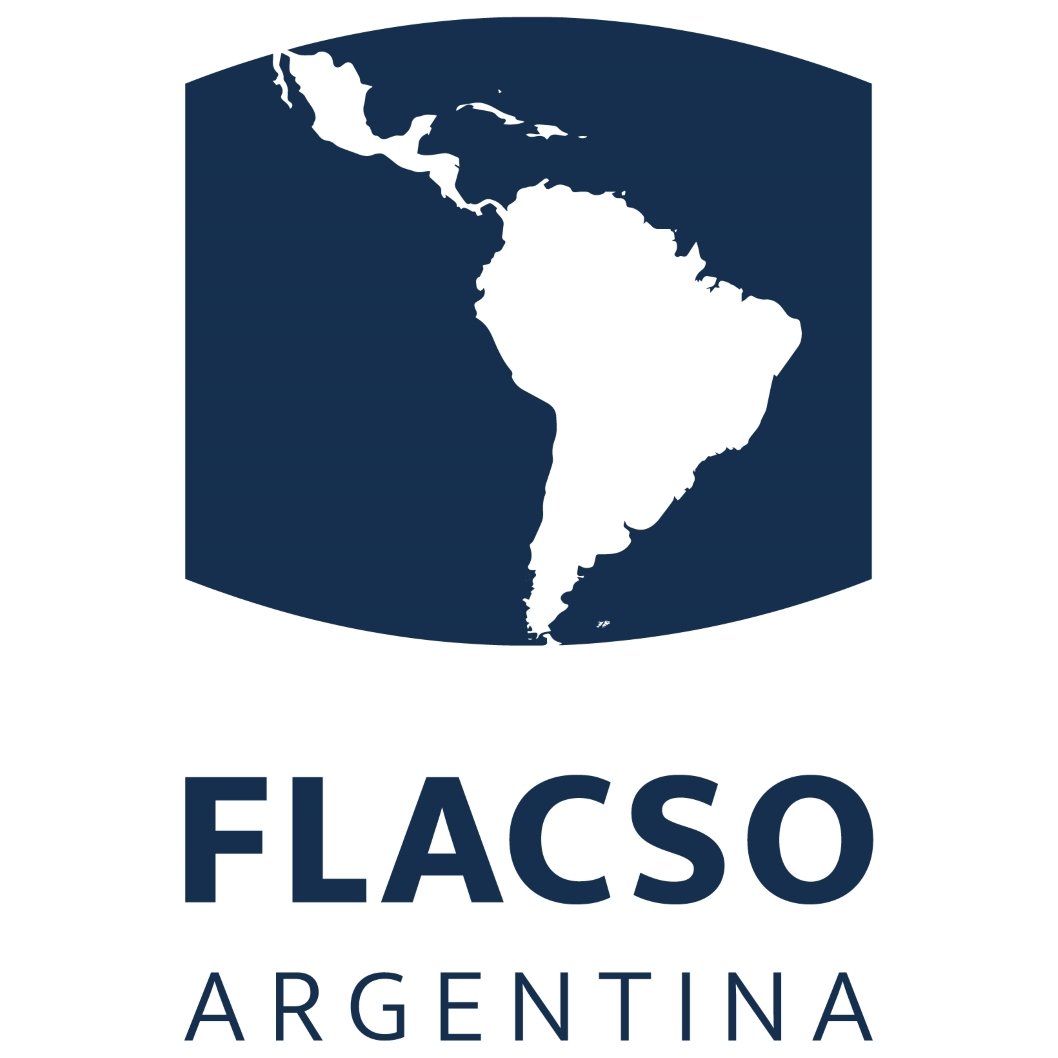
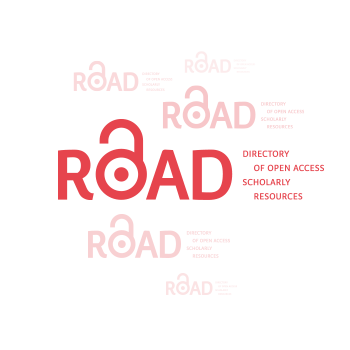





.png)
1.png)


